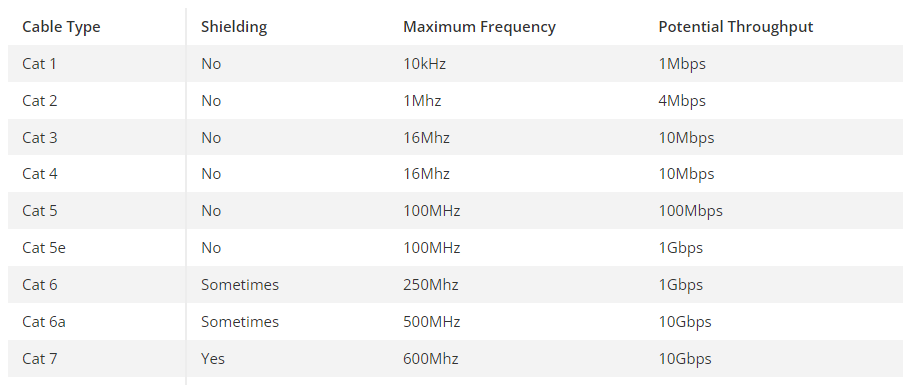This article provides an overview of HDA Audio Installation Network and Streaming Best Practices.
The HDA Scan Tool (found in this document) can be used to let URC know information about the AVB Clock (used to sync HDA audio on the network), and if some other network device may be affecting HDA audio streaming, which would cause audible distortion.
HDA Audio Installation Network and Streaming Best Practices
Here are some “best practices” URC recommends for any HDA installation:
- Verify that IGMP Snooping is disabled in all network switches and routers. IGMP interferes with the AVB protocol used by HDA amplifiers. (FAQ Article here)
- Verify that “SNTP” (Simple Network Time Protocol) is disabled in network switches and routers. More information about the SNTP time protocols can be found here or found here.
- Set all HDA amplifiers and I/Os to a Static IP address.
Update: The HDA-SW5 network switch should be set to use a DHCP reservation in the router. Note: It isn't possible to set the HDA-SW5 to a static IP address. - Set a DHCP range in the router that is outside of the Static IPs.
Many routers use the full IP range as the DHCP range. This is especially true of ISP-provided routers. - Do not use VLAN2 anywhere in the network. The AVB protocol typically uses VLAN2 for its communication between products.
If you are unsure of the implications, please reach out to URC Technical Support or refer to this FAQ article. - Verify that all HDA devices (including the HDA-SW5) are on the latest firmware available in Public Accelerator (currently v1735 for HDA amplifiers and I/Os, v213 for the HDA-SW5).
Please refer to this article on how to check and/or update the HDA-SW5 firmware. - Connect the HDA-SW5 in the system directly to the router – do not connect the HDA-SW5 to any other switch in the system.
- If/when you hear audio dropouts or distortion:
a. What is the STATUS of the front panel LEDs on the HDA units? (Power, Status, Ethernet)?
b. Are the HDA units rebooting themselves?
c. Is the Ethernet LED solid BLUE or OFF? - Is FIBER being used anywhere on the network?
You would need to use the fiber transceivers that we have tested and are known to work with AVB audio streaming.
Please refer to this document: Using HDA Audio with Fiber Network Transmission Adapters.pdf - What model/make routers and switches are being used in the installation?
We have white papers written for some routers/switches for use with HDA audio in the URC FAQ HDA section. - Check MRX performance/CPU usage in MCS – verify that there is not excessive strain on the MRX.
- CAT-5e or CAT-6 Cables?
Are you using ONLY CAT-5e or CAT-6 cables to connect all HDA equipment on your network? If not, remove all regular CAT-5 cables and replace with CAT-5e/CAT-6/CAT-7 cables with sufficient throughput. HDA equipment REQUIRES Gigabit (1Gbps) throughput.
If none of the above steps resolve the issue, we will need to look at the devices that are present on the network, and if those devices affect HDA audio streaming (i.e. streaming video, other audio streaming platforms, POS systems, etc.).
Using the logging available in the HDA Scan Tool Integration Guide URC_Total_Control_Check HDA State Tool_IG_rev1.1653_01232024.pdf will let us know information about the AVB Clock (used to sync HDA audio on the network), and if some other network device may be affecting HDA audio streaming, which would cause audible distortion.
Wireshark Capture (Windows 64-Bit – Windows 32-Bit – Mac OS) logs may also help us figure out what is causing an issue. This document will give instructions on capturing a log using Wireshark (Wireshark Instructions).
Additional Information & Resources:
URC HDA devices use “AVB” (Audio Video Bridging) to share audio streams among other HDA products on a network.
IGMP Snooping is a feature built into many switches and/or routers and can cause issues or interfere with AVB device discovery on the network. and is not recommended for HDA AVB networks. In many cases, IGMP is defaulted to "Enabled" within the switch.
URC recommends that you disable IGMP Snooping functionality when using HDA products in any project.
A good resource that explains AVB can be found by clicking this link.
If VLANS or other complex networking methods are required, please contact your IT administrator or your regional URC Sales Engineer to consult on potential resolutions.
To learn more about HDA products and programming, please see the HDA Programmers Guide or the Accelerator 3 online Programming Guide.

